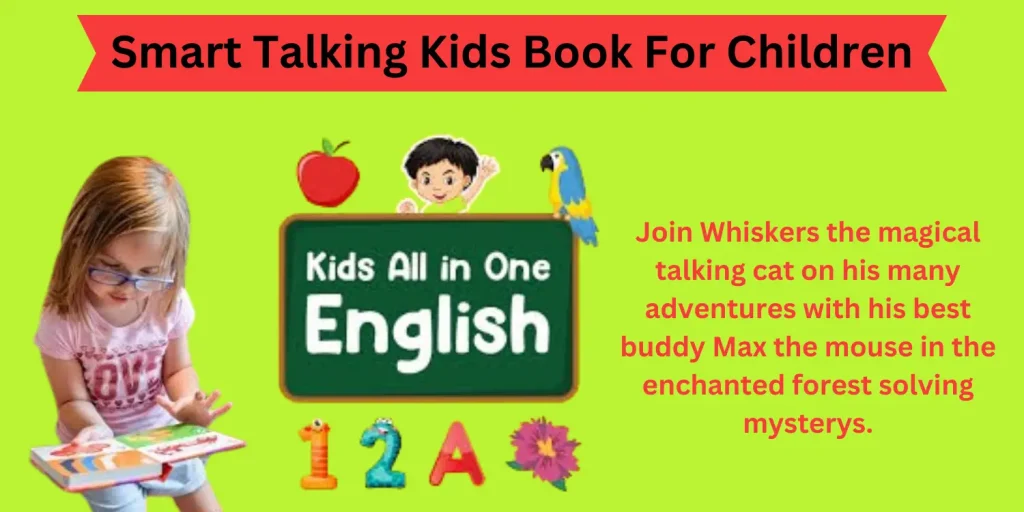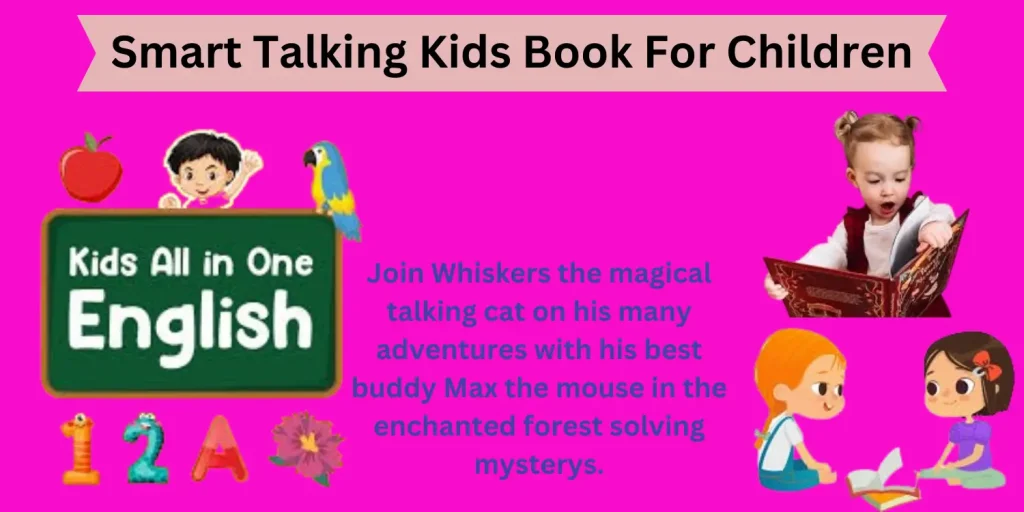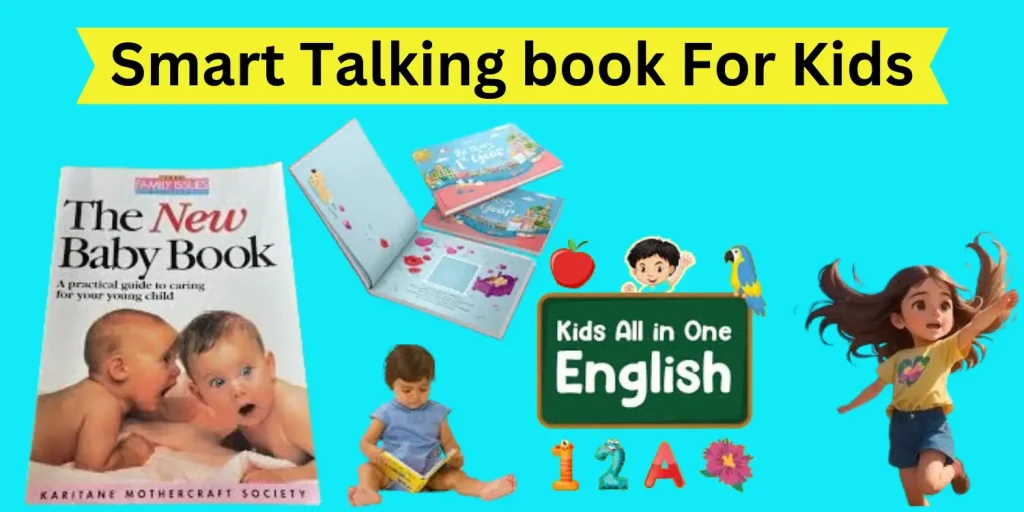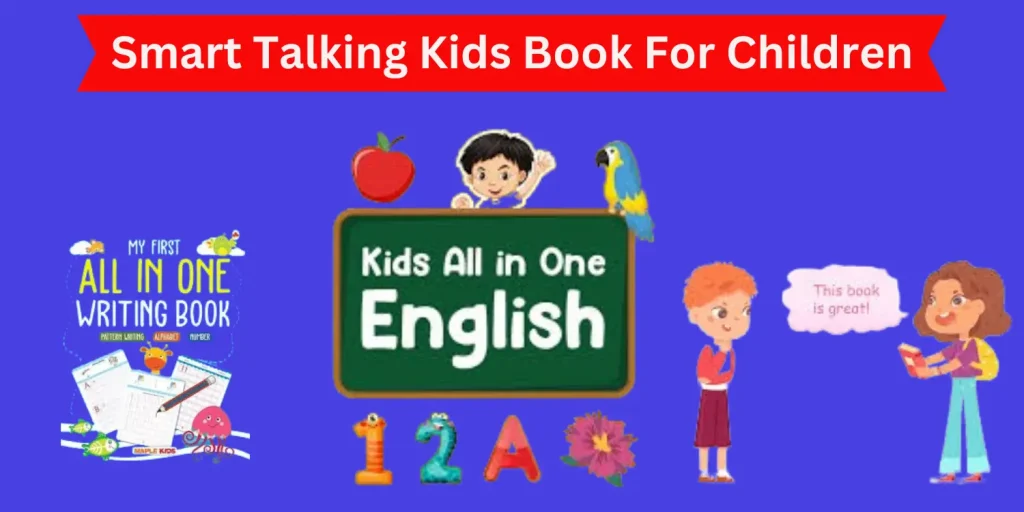Meta Description:
Discover the Smart Talking Book for Kids – an interactive learning tool that combines storytelling, games, and educational activities with engaging voice narration. Perfect for making reading fun, boosting literacy skills, and sparking curiosity in young minds!
Amazing Smart Talking Book for Kids all about?

How does an introduction to a children Talking book start?
So an opening line for a children’s talking book needs to interest, create mood and introduce the main character or place. Here’s an illustration:Once upon a time, a little bear named Benny lived in a cozy, thick forest in which birds chirped sweetly and sunlight poured down from between the leaves.
Benny was different from the other bears in the forest. While his friends liked playing hide-and-seek or going fishing in the stream, Benny had a special little talent: he could talk to the stars. Every night Benny would lie back on a patch of soft grass and huff his wishes into the night when the sky was a twinkling haze of glittering legislation. (He didn’t know if the stars could actually hear him, but as he spoke they glowed brighter, as if they were taking in all his love as they sang along.)
talking book-Oh, one great thing happened one night. As he wished for adventure as always, a little star came falling from the sky and landed directly at Benny’s feet! The star sparkled and shimmered, as if beckoning Benny to join it on a journey beyond the forest. Benny was accompanied by a beating heart of passion where his journey was going to take him to places and to people he might have never seen before and to things he never imagined he will see.Here, the foreshadowing of quite the exhilarating journey, mixed with the introduction of a mysterious character trait sets suspense. Designed to attract and engage young readers in the narrative.
Why do kids love books?

Talking Book are expensive, and they come in handy in so many ways. Books do wonders for a child’s imagination. Through stories, children are exposed to worlds, people and experiences that they would likely never encounter in person. They are inspired, and they are amazed by the human experience.” Well, reading books can help you in that as well. Indirect reading (for example, they learn new words, phrases and how to express themselves, etc. This helps to strengthen their communication and vocabulary, which are both crucial for achievement in school and later life.
talking Books are also a source of important life lessons. There are many stories that allow kids to look through the lens of emotions, relationships and challenges in order to understand others and themselves. They gain acquiescence problem-solving and empathy skills, knowledge for managing more awkward circumstances in a designed and safe way.
talking book-The books also help people focus and stay focused. Sitting down with a book and being forced to focus solely on a story in this frenetic world is positive for a child’s attention span and cognitive abilities. Because books are a very diverse educational resource, that you also rationally, because they make you a better person when logic prevails over feelings. They also nurture some of the most essential qualities we’ll need to grow into lives compassion and curiosity, critical thinking and thoughtfulness — in short, habits that set the stage for lifelong learning.
How do you write conversation in a children’s book?
talking book-Using dialogue as little as you can. But the simplicity has its limits too. The objective is to tell something that is able (or meant) to provoke some kind of emotion, action or moral, while making sure that the chat is nice to hear, easy to listen to and comprehend. Here are some pointers:Give a kiss: Use short, simple sentences at a level of abstract thinking appropriate to the child. Be concise, be straightforward, and answer in a timely manner.
For example, “Can we play outside?” Lily enquired. “All right, let’s go!” Max answered.
Speak up: Each character might have an own persona. A carefree person may speak fast and with a lot of enthusiasm, while a shy type may be monotone or say little.For instance: “Look, look! An enormous bug! Timmy jumped up and down and cried hysterically.”No way, eew!” Sara cried out as she backed away.Use actions: Actions along with words will make for a more dynamic and engaging conversation. It makes it easier for young readers to connect to the feeling of the words.

For example, Anna said, “I’m so scared,” while holding her teddy bear.
talking book-“Don’t worry, I’ll keep you safe,” Ben said, puffing out his chest like a superhero.One way you might move your story forward is through dialogue: Allow one character’s speech to reveal key information, advance the plot, or bring out themes.In children’s books, dialogue is something of an aesthetic ingredient that can enrich storytelling, bring it to life and provide a point of entry into the characters and the story for young readers.
Why is it essential for children to listen to stories?
Storytelling is important for children because it helps to develop their imagination, enhances their emotional intelligence, and supports their overall development. Storytelling immerses children in worlds about which they know nothing, with people they have never seen, in situations of strangeness. This stimulates creativity and expands their view of the world because it allows children to imagine possibilities beyond their limited experiences. Stories are a fun way of teaching important lessons in life too. Storytelling is a dramatic form of narrative that has proven effective in teaching children values like kindness, honesty or resilience. They often have an emotional attachment to characters who make mistakes, which helps children process their own feelings and foster empathy for others.

talking book-Storytelling also enhances communication and linguistic skills. Storytelling also exposes children to a rich variety of words, sentence patterns and expressive language. This development improves their speaking, writing, and reading skills, all fundamental components for success in the classroom. Another important benefit of storytelling is social interaction. Telling stories, either reading aloud or taking turns telling one another stories, helps children form connections with others. This creates a sense of community and connection.All in all, storytelling supports the social, emotional and cognitive development of children. This is a very effective technique that helps them enhance their creativity and communication skills, as well as shape their outlook towards the world and themselves.
What do you think matters most in a children’s book?
The most important part of a children’s talking book, after all, is the story itself — the interesting and relatable stuff that sparks the child’s interest. This is the book’s core, a plot that propels the story along and keeps young readers engaged. Good stories should have characters kids can relate to, even if they are fictitious, human or animal.
This needs to be simple but fascinating, too. The child ought to be mesmerized by the story and desperate to flip the pages again and again to find out what happens next —ещу.Equally important is the lesson or moral of the story. And children’s novels often teach life lessons, whether they be about friendship, kindness, perseverance or embracing diversity. These teachings shapes children’s behaviour and morals, giving them a compass to navigate a confusing world.
talking book-The illustrations of an children’s talking book are also very important, especially for younger readers. The story is brought to life and there is a visual aspect that helps the reader connect with and understand what they are reading on the page. They substantiate the text by giving it context, lifting its tone and supplying visual markers which help comprehend it. Ultimately, a children’s book is a winner when its plot and characters and themes and images come together to provide young readers a deep, entertaining and significant experience.
Why do children’s books exist?

talking book-Children’s books also help language development. They build reading, writing and communication skills through new vocabulary, sentence structures and storytelling techniques. A child learns to read through interacting with text and visuals — an important precursor to academic success. Furthermore, books allow children to gain exposure to other cultures, perspectives and ideas, fostering empathy and broadening their worldview. Whether the purpose is entertainment, education or emotional growth, children’s books are invaluable tools in nurturing the development of young brains, bonds and life skills.
But how does the popularity of a children’s book come about?
A children’s book that captures the attention and sets the imagination of young readers is an interesting and relatable experience while staying unforgettable. The popularity of a children’s book is determined by a few crucial factors:Relatable Characters: The best loved children’s books often include characters that children relate to — whether through similar feelings, circumstances or personality traits. Characters who are bold, curious, or defiant are particularly likeable.

Interesting Plot: A good storyline is important. Books that soar in popularity often have simple, uncomplicated plots that snare young readers. The story’s humour, mystery or themes of adventure should leave children wanting more.images: Young readers are especially attracted to vivid, colourful, and appealing images. They cement the story’s realism and interest level. Good visuals reinforce the story — and they can convey facts and emotions that the words don’t always have the power to.Age-wise Content: The finest kid literature is age-appropriate since it is meant for specific age separate. The story must be developmentally appropriate in terms of language, themes, and complexity for the readers.
Emotional connection: Popular children novels often invoke emotional responses from reading them, feelings such as laughter, thrills or even empathy, making the readers feel connected to the story and characters. It is this emotional connection that makes the book memorable and ripe for a re-reading.In other words, a children’s book hits the mark when it’s topical, well-illustrated, plot-driven, and has great characters.
What is the central concept of a children’s book?

The main idea of a children’s book, which is usually written in a manner that children can easily understand, is the book’s essential subject or theme. One central theme dictates the plot, characters and tone of the whole story. The underlying premise, whether it’s kindness, friendship, bravery, or problem solving, is relatable for kids, who learn important lessons as they engage with the story. For example, a book about sharing can provide an instance when the characters share their toys or help others in need, educating them in the virtue of kindness.
The main idea is clear and simple: “Sharing is caring.” To help young viewers understand that self-esteem is useful a book stressing self-esteem can be to tell the story of a character who learns to have faith in him cuff. Another thing that the main topic provides is the moral or lesson that children can learn from the book. These courses often support children’s social and emotional development by prompting them to reflect critically on their own perspectives and behaviors.
The premise of a children’s book can spark curiosity, promote empathy and fuel imagination in addition to teaching important lessons. By highlighting relatable themes, children’s books help young readers investigate what’s around them and try out new feelings and experiences.
What is a book’s major idea?

Additionally, imparting a skill or concept — be it counting, the alphabet or moral lessons — can also be a book’s primary focus. Children’s books are crafted to a standard to satisfy both the mind and the imagination, providing a holistic experience that is as educative as it is entertaining. Ultimately, a book’s key idea undergirds the story and provides the reader direction. It helps someone get something out of it — whether that is a life lesson, deeper understanding of the world, or just some fun vibes.
How do you conclude a book discussion?
End of a book talk is an important time to sum up your presentation, reiterate key themes, and leave your audience with an impression that lasts. It ought to provide a brief overview of some things you liked about the book too, highlighting its strong points and distinguishing features whether that’s lovable characters, engaging story, or amazing insights.

A great way to conclude your discussion is to reiterate the book’s key themes—whether it be an inspiring message, an exciting adventure, or a moving story. To make readers think about how the book meets their tastes, you can also mention that it’s appealing to a certain age group of interest; So, “If you love stories about friendship and overcoming obstacles, this book is perfect for you.
In addition, a good conclusion often uses a call to action, asking us to pick up the book and dive into the world it creates. When this is done in a fun and stimulating way, curiosity and interest can be sparked.Finally, end with something that will linger a bit with you, maybe a passage from the book or your own idea as to why this book got stuck in your mind. This keeps your audience thinking about the book well after your discussion is done, and entice them to go read the book themselves.
Table of Contents